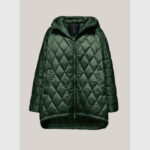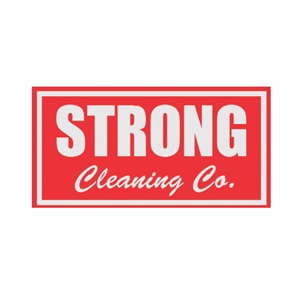Easter is the perfect time to get crafty, and what better way to celebrate the season than by making your very own Easter eggs at home? Whether you’re looking to decorate eggs for a traditional Easter egg hunt, create beautiful handcrafted keepsakes, or just enjoy a fun activity with family and friends, making Easter eggs can be a delightful and personal touch to your holiday celebrations.
In this blog, we’ll walk you through different ways to make and Easter Decorations eggs at home—using various techniques and materials. Let’s dive into the creative world of Easter eggs!
1. Traditional Dyeing with Food Coloring
One of the simplest and most beloved ways to decorate Easter eggs is by dyeing them with food coloring. This classic method is easy to do, and the vibrant results are always fun!
What You’ll Need:
- Hard-boiled eggs (make sure to cool them after boiling)
- Food coloring (liquid or gel)
- Cups or bowls
- Water
- Vinegar
- Spoons or tongs
- Old newspaper or paper towels for drying
How to Make the Easter Eggs:
- Prepare Your Dyes: In each cup or bowl, mix about 1 cup of warm water, 1 tablespoon of vinegar, and a few drops of food coloring. You can adjust the amount of food coloring depending on how vibrant you want your eggs to be. For deeper colors, use more dye.
- Dip the Eggs: Gently place the hard-boiled eggs into the dye. You can use spoons or tongs to avoid staining your hands. Let the eggs soak for 3-5 minutes, depending on how deep you want the color.
- Dry and Display: Once the eggs are fully dyed, carefully remove them and let them dry on a paper towel or newspaper. Repeat the process with different colors if you’d like to create a multi-colored design.
- Add Personal Touches: After the eggs have dried, you can add extra decoration with stickers, glitter, or markers to make your eggs unique!
2. Marbled Easter Eggs with Shaving Cream
For a more artistic and sophisticated look, try making marbled Easter eggs with shaving cream. This method creates beautiful, swirled patterns that look like they’ve been painted by a professional.
What You’ll Need:
- Hard-boiled eggs
- Shaving cream (foam, not gel)
- Food coloring
- Paper towels
- A shallow dish or baking tray
How to Make the Easter Eggs:
- Prepare the Shaving Cream: Spread a layer of shaving cream in the shallow dish or baking tray. It doesn’t have to be a thick layer—just enough to cover the bottom.
- Add Food Coloring: Drop a few drops of food coloring onto the shaving cream. You can use different colors to create a beautiful marble effect.
- Swirl the Colors: Using a toothpick or skewer, gently swirl the food coloring around in the shaving cream to create a marble pattern. Be careful not to over-mix the colors.
- Dye the Eggs: Roll the hard-boiled eggs in the colored shaving cream. Make sure the eggs are fully coated in the cream. Leave the eggs in the shaving cream for about 10 minutes to allow the colors to absorb.
- Wipe Off and Dry: Once the eggs have absorbed the color, gently wipe off the shaving cream with a paper towel. You’ll be left with beautifully marbled Easter eggs. Let them dry completely before displaying them.
3. Decoupage Easter Eggs (Using Tissue Paper)
If you’re looking for a more intricate design or a fun way to recycle old paper, decoupage Easter eggs are a fantastic option! You can use tissue paper, napkins, or even magazine cut-outs to create a beautiful, textured design.
What You’ll Need:
- Hard-boiled eggs
- Decoupage glue (like Mod Podge)
- Tissue paper, napkins, or scrapbooking paper
- Paintbrush
- Scissors
- Ribbon (optional)
How to Make the Easter Eggs:
- Prepare the Paper: Cut your tissue paper or napkins into small pieces. You can go for random shapes or create specific designs—flowers, geometric patterns, or stripes are all great choices!
- Apply Decoupage Glue: Using a paintbrush, coat a small section of the egg with decoupage glue. Then, gently place the paper pieces onto the glued area. Brush over the paper with more glue to seal it in place.
- Layering: Continue this process, overlapping paper pieces and gluing them down until the entire egg is covered. Be sure to smooth out any wrinkles as you go.
- Finishing Touches: Once the glue has dried, you can add a final layer of decoupage glue to seal the paper in place. If you’d like, you can add a ribbon around the top for an extra decorative touch.
- Dry and Display: Let the eggs dry completely before displaying them. These decoupage eggs make beautiful additions to Easter baskets or table centerpieces.
4. Natural Dye Easter Eggs
For a more eco-friendly and natural approach, you can dye your Easter eggs using ingredients you already have in your kitchen. Natural dyes can create soft, earthy tones that are just as beautiful as the artificial ones.
What You’ll Need:
- Hard-boiled eggs
- Natural dye sources (e.g., beets, spinach, red cabbage, turmeric, coffee, etc.)
- Water
- Vinegar
- Strainer (for some dyes)
- Bowls or cups for dyeing
Natural Dye Recipes:
- Beet Juice (for pink or red): Boil 1-2 beets in water, then strain the juice and mix with 1 tablespoon of vinegar.
- Spinach (for green): Boil a handful of spinach leaves in water, strain the juice, and mix with vinegar.
- Turmeric (for yellow): Boil 1-2 tablespoons of turmeric powder in water, then add vinegar.
- Red Cabbage (for blue or purple): Boil red cabbage leaves, strain the juice, and mix with vinegar for blue hues.
- Coffee (for brown): Brew strong coffee and add vinegar to create a rich brown color.
How to Make the Easter Eggs:
- Prepare the Dye: Choose one or more natural dyes and follow the steps above to prepare the dye bath. Once prepared, place the dyes into bowls or cups.
- Dye the Eggs: Dip your hard-boiled eggs into the natural dye for about 10-15 minutes, depending on how deep you want the color. You can also leave them in the dye overnight for more intense colors.
- Dry the Eggs: Once you’ve achieved the desired shade, remove the eggs and let them dry on a paper towel.
5. Personalized Easter Eggs with Markers and Stickers
If you’re looking for a super simple and fun way to decorate your Easter eggs, grab a few markers or stickers and let your creativity flow!
What You’ll Need:
- Hard-boiled eggs
- Permanent markers (in different colors)
- Stickers (Easter-themed or any design you like)
How to Make the Easter Eggs:
- Get Creative with Markers: Use the markers to draw designs on your eggs—whether it’s simple patterns, fun characters, or even funny faces.
- Add Stickers: If you don’t feel like drawing, you can always decorate your eggs with cute Easter-themed stickers like bunnies, flowers, or eggs.
- Personalize: Make the eggs more personal by writing names, messages, or holiday greetings on them.
Conclusion
Making Easter eggs at home is a fun and creative way to celebrate the holiday. Whether you prefer the traditional food coloring method, want to experiment with marbling, or enjoy the natural beauty of homemade dyes, there’s no wrong way to decorate your eggs. Grab your supplies, gather your family or friends, and get ready to create some beautiful and unique Easter eggs that everyone will love. Happy Easter gnomes crafting!




